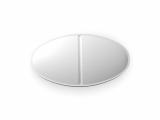What is micromeritics in pharmacy
In the field of pharmacy, a thorough understanding of micromeritics is vital. Micromeritics refers to the science and technology of small particles and their behavior. It involves the study and characterization of various properties, such as particle size, shape, surface area, and porosity. These properties play a crucial role in drug formulation, manufacturing, and delivery.
One of the key aspects of micromeritics is particle size analysis. The size of pharmaceutical particles directly impacts their dissolution rate, stability, and bioavailability. By using techniques like laser diffraction, microscopy, and sedimentation, pharmaceutical scientists can accurately determine the size distribution of particles, enabling precise formulation and dosage adjustments.
Surface area measurement is another important parameter in micromeritics. The larger the surface area of a particle, the more contact it can have with other substances, such as solvents or reactive agents. This can significantly affect drug dissolution, adsorption, and chemical reactions. Various methods, including gas adsorption and liquid displacement techniques, are used to measure surface area and pore volume, providing valuable information for drug development.
Understanding the micromeritics of pharmaceutical materials is essential for ensuring consistent drug performance, improving drug stability, and optimizing drug delivery systems. By characterizing particles at a microscopic level, scientists can make informed decisions in formulation design, selection of excipients, and manufacturing processes. Furthermore, a thorough understanding of micromeritics facilitates the development of novel drug delivery systems, such as nanoparticles, microparticles, and liposomes, which can enhance drug solubility, efficacy, and targeted delivery.
In conclusion, the science of micromeritics plays a vital role in the field of pharmacy. By studying the behavior and properties of small particles, pharmaceutical scientists can optimize drug formulation, manufacturing, and delivery. Micromeritics allows for accurate measurement of particle size and surface area, enabling precise dosage adjustments and formulation design. With its importance in drug development and delivery systems, a comprehensive understanding of micromeritics is essential for the advancement of pharmaceutical science and the improvement of patient outcomes.
What is Micromeritics in Pharmacy?
In the field of pharmacy, micromeritics refers to the study and measurement of the physical characteristics of pharmaceutical powders and particles. It involves the analysis and understanding of the size, shape, surface area, porosity, and other properties of these particles, as well as their interactions with each other and with other materials. This information is crucial for the development and formulation of drugs, as it can impact factors such as drug stability, dissolution rates, and bioavailability.
Micromeritics plays a vital role in various aspects of pharmaceutical manufacturing and research. For instance, it helps in selecting the appropriate particle size distribution for a drug product, as this can affect its flow properties, compressibility, and dosage form performance. Micromeritics is also utilized in the preparation of dosage forms such as tablets and capsules, where the properties of the particles determine factors like the rate at which the drug is released and its absorption in the body.
There are several techniques and instruments used in micromeritics. These include laser diffraction, which measures particle size distribution; surface area analyzers, which determine the specific surface area of particles; porosimeters, which measure porosity; and microscopy techniques, which provide information on particle morphology. Additionally, techniques such as sedimentation, sieving, and centrifugation may be used for particle size analysis.
Overall, micromeritics is a critical component of pharmaceutical development and quality control. By understanding the physical characteristics of drug particles, scientists and researchers can optimize drug formulations, enhance drug delivery, and ensure the efficacy and safety of pharmaceutical products.
The Importance of Particle Size in Pharmacy
Particle size is a crucial factor in the field of pharmacy. It plays a significant role in the formulation and development of pharmaceutical products. The size of drug particles can affect their bioavailability, dissolution rate, stability, and overall therapeutic efficacy.
Bioavailability: The particle size of a drug can impact its absorption in the body. Smaller particles have a larger surface area, which allows for more effective and rapid absorption. This is especially important for orally administered drugs, as smaller particles can be easily taken up by the intestinal tract.
Dissolution Rate: The rate at which a drug dissolves in the body is influenced by its particle size. Finely divided particles have a larger surface area, leading to faster dissolution. This is advantageous as it allows for the drug to be rapidly released and available for absorption.
Stability: The particle size can also affect the stability of pharmaceutical formulations. Fine particles may be more susceptible to degradation, aggregation, or physical changes, which can impact the shelf life and effectiveness of the product. Therefore, it is important to carefully control and monitor the particle size during formulation.
Therapeutic Efficacy: The particle size of a drug can significantly impact its therapeutic efficacy. The desired particle size range can vary depending on the intended route of administration and the specific drug. For example, inhalable drugs typically require small particles to ensure deep penetration into the respiratory system.
In conclusion, particle size is a critical parameter to consider in the field of pharmacy. It affects various aspects of drug absorption, dissolution, stability, and efficacy. By understanding and controlling particle size, pharmaceutical scientists can optimize drug formulations to ensure maximum therapeutic benefits.
How Particle Size Analysis Impacts Drug Delivery and Formulation
Optimizing Drug Performance
Particle size analysis plays a crucial role in drug delivery and formulation, as it directly impacts the performance and effectiveness of pharmaceutical products. By understanding and controlling the particle size of drug substances, researchers and formulation scientists can optimize drug performance.
Achieving Targeted Drug Delivery
Particle size analysis enables researchers to design drug delivery systems that can target specific sites in the body. By controlling the particle size, drugs can be formulated to reach their intended target more efficiently and reduce side effects. For example, nanoparticles with a smaller particle size can be designed to penetrate deep into tissues or cross barriers in the body, allowing for more effective drug delivery to the desired location.
Influencing Drug Dissolution
The particle size of a drug substance can significantly affect its dissolution rate. Smaller particles have a larger surface area, leading to faster dissolution compared to larger particles. By analyzing the particle size distribution, formulation scientists can adjust the drug formulation to ensure optimal dissolution rates and improve the bioavailability of the drug.
Enhancing Stability
Particle size analysis is essential in ensuring the stability of pharmaceutical formulations. Large particle sizes can promote particle aggregation and sedimentation, leading to decreased stability. By accurately measuring and controlling particle size, formulation scientists can prevent these stability issues and extend the shelf life of pharmaceutical products.
Quality Control and Regulatory Compliance
Meeting Regulatory Standards
Particle size analysis plays a crucial role in meeting regulatory standards for drug products. Regulatory agencies often require characterization of the particle size distribution as part of the drug approval process. By conducting particle size analysis, pharmaceutical companies can ensure compliance with regulatory requirements and avoid delays in product approval.
Ensuring Batch-to-Batch Consistency
Particle size analysis is also important in ensuring batch-to-batch consistency during drug manufacturing. By monitoring the particle size distribution, companies can detect any variations or deviations that may affect the quality and performance of the drug product. This allows for timely adjustments and ensures consistent product quality.
Identifying Counterfeit Drugs
Particle size analysis can be used as a tool to identify counterfeit drugs. Each branded drug has a specific particle size distribution, and any discrepancies in the particle size can indicate the presence of counterfeit drugs. By performing particle size analysis, pharmaceutical companies can detect counterfeit drugs and protect patient safety.
In conclusion, particle size analysis has a significant impact on drug delivery and formulation. It allows for the optimization of drug performance, targeted drug delivery, improved dissolution rates, enhanced stability, and ensures regulatory compliance and product quality. Understanding the importance of particle size analysis is essential for developing safe and effective pharmaceutical products.
Techniques for Microparticle Characterization
1. Optical Microscopy
Optical microscopy is a widely used technique for microparticle characterization. It involves the use of visible light to observe and analyze microparticles. This technique allows for the visualization of microparticles and can provide information about their size, shape, and surface characteristics. Optical microscopy can be performed with a variety of instruments, including brightfield microscopy, darkfield microscopy, and phase contrast microscopy.
2. Scanning Electron Microscopy (SEM)
Scanning electron microscopy (SEM) is a powerful technique for microparticle characterization. It uses a focused beam of electrons to scan the surface of microparticles and generate high-resolution images. SEM can provide information about microparticle size, shape, morphology, and surface topography. It is particularly useful for studying the surface features of microparticles at a nanoscale level.
3. Dynamic Light Scattering (DLS)
Dynamic light scattering (DLS) is a technique used to measure the size distribution of microparticles in a liquid suspension. It is based on the analysis of the fluctuations in the intensity of scattered light caused by the Brownian motion of the microparticles. DLS can provide information about the average size, size distribution, and polydispersity index of microparticles. It is commonly used in the pharmaceutical industry for the characterization of drug delivery systems, such as liposomes and nanoparticles.
4. Laser Diffraction
Laser diffraction is a technique that measures the size distribution of microparticles based on the diffraction pattern produced when a laser beam passes through a sample. The diffraction pattern is analyzed to determine the particle size distribution using mathematical algorithms. Laser diffraction can provide information about the particle size distribution, as well as the average particle size and shape parameters of microparticles. It is widely used in various industries, including pharmaceuticals, chemicals, and minerals.
5. Differential Scanning Calorimetry (DSC)
Differential scanning calorimetry (DSC) is a technique used to study the thermal behavior of microparticles. It measures the heat flow between a sample and a reference material as a function of temperature. DSC can provide information about the melting point, crystallization, phase transitions, and thermal stability of microparticles. It is commonly used in the pharmaceutical industry for the characterization of polymers and drug formulations.
An Overview of Common Methods Used in Micromeritics
Laser Diffraction:
The laser diffraction method is widely used in micromeritics to measure particle size distribution. It involves passing a laser beam through a sample and analyzing the scattered light to determine the size of the particles. This method is non-destructive and can provide fast and accurate results for a wide range of particle sizes.
Sedimentation Analysis:
Sedimentation analysis is used to determine the size and density of particles by measuring their settling rate in a liquid medium. The particles are allowed to settle under the influence of gravity, and the rate at which they settle is measured to calculate their size. This method is particularly useful for fine particles that do not scatter light well.
Brunauer-Emmett-Teller (BET) Method:
The BET method is used to measure the specific surface area of particles, which is an important parameter in many pharmaceutical applications. It involves adsorbing a gas onto the surface of the particles and measuring the amount of gas adsorbed at different pressures. This data is then used to calculate the specific surface area using the BET equation.
Pycnometry:
Pycnometry is a method used to measure the density of particles by comparing their mass to the volume of a known volume of liquid. The particles are immersed in a liquid and their displacement is measured to calculate their volume. The mass of the particles is then divided by their volume to obtain their density. This method is commonly used for solid materials.
Dynamic Light Scattering:
Dynamic light scattering is a technique used to measure the size of nanoparticles in solution. It involves analyzing the fluctuations in scattered light to determine the size of the particles. This method is particularly useful for particles in the submicron range.
In conclusion, these are just a few of the common methods used in micromeritics. Each method has its own advantages and limitations, and the choice of method depends on the specific application and the properties of the particles being analyzed.
Understanding Particle Size Distribution
Particle size distribution is a critical parameter in pharmaceutical formulations and drug delivery systems. It refers to the range of particle sizes present in a sample and is commonly represented as a histogram or cumulative distribution curve.
Importance of Particle Size Distribution
Particle size distribution plays a crucial role in determining the physical and chemical properties of pharmaceutical products. It affects drug stability, dissolution rate, bioavailability, and even the therapeutic efficacy of the drug. Therefore, understanding and controlling particle size distribution is vital for ensuring the quality, safety, and performance of pharmaceutical formulations.
Measurement Techniques
Several techniques are used to measure particle size distribution, including laser diffraction, microscopy, sedimentation, and sieving. Laser diffraction is a commonly used method that measures the scattering pattern of particles to determine their size distribution. Microscopy involves visually analyzing particle images to estimate their size and shape. Sedimentation techniques rely on the principle that larger particles settle faster than smaller ones, while sieving involves separating particles based on their size using mesh screens.
Factors Affecting Particle Size Distribution
Various factors can influence particle size distribution, including the manufacturing process, raw materials, and formulation parameters. Factors like milling time, milling speed, and the presence of stabilizers can all impact the final particle size distribution. It is essential to carefully control these factors to achieve the desired particle size range and distribution for optimal drug performance.
Applications of Particle Size Distribution
Particle size distribution analysis is used across different stages of drug development and formulation. It helps in characterizing raw materials, evaluating the effectiveness of a drug delivery system, and understanding the behavior of particles during manufacturing processes such as blending, granulation, and compression. Additionally, it aids in quality control and ensures consistency in production by monitoring particle size during batch-to-batch variations.
The Relationship Between Particle Size Distribution and Pharmaceutical Properties
The particle size distribution of pharmaceuticals plays a crucial role in determining their physical and chemical properties. This distribution refers to the range of particle sizes present in a sample and provides valuable information about the uniformity and consistency of drug formulations.
A narrow particle size distribution is desirable in pharmaceuticals as it ensures that the drug particles are of similar size, leading to improved drug performance. This is particularly important for orally administered solid dosage forms, where uniformity in particle size can enhance dissolution and absorption.
Particle size distribution also affects the flowability and compressibility of pharmaceutical powders. An ideal particle size distribution allows for easy flow of powders during manufacturing, preventing problems such as segregation and erratic filling of capsules or tablets. Moreover, it can impact the compressibility of granules, influencing tablet hardness and friability.
Furthermore, the particle size distribution has implications for drug stability and bioavailability. Small particle sizes can increase the surface area of the drug, facilitating dissolution and enhancing drug release. In contrast, larger particles may exhibit slower dissolution rates and reduced bioavailability. Therefore, controlling and optimizing particle size distribution is critical in pharmaceutical formulation development to ensure consistent drug performance and therapeutic efficacy.
Applications of Micromeritics in Pharmacy
Micromeritics, the science of studying small particles, has a wide range of applications in pharmacy. By understanding the physical and chemical properties of particles, pharmaceutical scientists can develop and optimize drug formulations, monitor the quality of pharmaceutical products, and ensure the safety and efficacy of medications.
1. Formulation Development
One of the key applications of micromeritics in pharmacy is in the formulation development of drugs. By characterizing the particle size, shape, surface area, and porosity of active pharmaceutical ingredients (APIs) and excipients, scientists can determine the optimal formulation for drug delivery. This information helps in achieving desired drug release profiles, improving bioavailability, and enhancing stability and solubility.
2. Quality Control
Micromeritics plays a crucial role in quality control of pharmaceutical products. By analyzing particle size distribution, density, and flow properties, pharmaceutical manufacturers can ensure consistent product quality. This information helps in detecting any deviations or variations in particle properties, which can impact drug performance, dissolution, and stability. Regular micromeritics testing allows manufacturers to maintain product quality and meet regulatory requirements.
3. Powder Characterization
Powder characterization is an essential part of pharmaceutical manufacturing. Micromeritics techniques are used to analyze the physical properties of powders, such as bulk density, tapped density, compressibility, and flowability. This information helps in selecting the appropriate manufacturing processes, optimizing powder handling and processing, and predicting powder behavior during packaging and tablet compression.
4. Drug Delivery Systems
Micromeritics is instrumental in the development of various drug delivery systems. By understanding the particle attributes of carriers, such as nanoparticles, liposomes, and microspheres, scientists can design targeted drug delivery systems. These systems can control drug release, enhance drug stability, improve bioavailability, and enable site-specific drug delivery for better therapeutic outcomes.
5. Inhalation and Nasal Drug Delivery
Micromeritics is particularly important in the field of inhalation and nasal drug delivery. By analyzing particle size distribution and aerodynamic properties of powders, scientists can develop efficient inhalation devices and nasal sprays. This knowledge helps in delivering drugs to the desired site of action in the respiratory system and optimizing drug deposition in the lungs or nasal cavity.
In conclusion, micromeritics has numerous applications in pharmacy, ranging from formulation development and quality control to powder characterization and drug delivery systems. By understanding and manipulating particle properties, pharmaceutical scientists can enhance drug efficacy, patient compliance, and overall pharmaceutical product performance.
The Role of Microparticle Characterization in Drug Development and Quality Control
Microparticle characterization plays a crucial role in drug development and quality control. By understanding the physical and chemical properties of microparticles, pharmaceutical companies can ensure the safety, efficacy, and quality of their drug products.
Understanding Drug Release and Bioavailability
One of the key reasons for microparticle characterization is to understand drug release and bioavailability. Microparticles can be designed to release drugs in a controlled manner, and by analyzing their size, shape, and surface properties, scientists can predict how drugs will be released in the body. This information is essential for determining the effectiveness of a drug and ensuring optimal bioavailability.
Ensuring Product Stability and Shelf Life
Microparticle characterization also plays a crucial role in ensuring product stability and shelf life. By analyzing factors such as particle size distribution, surface area, and porosity, pharmaceutical companies can determine the stability and degradation kinetics of their microparticle-based drug products. This information is essential for establishing appropriate storage conditions, expiration dates, and packaging materials to maintain the integrity of the drug throughout its shelf life.
Controlling Drug Delivery Systems
Another important aspect of microparticle characterization is controlling drug delivery systems. By analyzing the properties of microparticles, such as their size, surface charge, and drug loading capacity, pharmaceutical companies can design and optimize drug delivery systems that ensure precise and targeted drug delivery. This is particularly important for drugs with narrow therapeutic windows or drugs that require specific release profiles.
Quality Control and Regulatory Compliance
Microparticle characterization is also essential for quality control and regulatory compliance. By thoroughly characterizing microparticles, pharmaceutical companies can ensure that their drug products meet the required specifications and comply with regulatory guidelines. This includes analyzing parameters such as particle size, morphology, drug content uniformity, and dissolution rate. Robust and comprehensive microparticle characterization provides confidence in the quality and consistency of drug products, which is essential for patient safety and regulatory approval.
Emerging Trends in Micromeritics
Nanotechnology Integration
One emerging trend in micromeritics is the integration of nanotechnology into pharmaceutical applications. Nanoparticles and nanomaterials are being used to enhance drug delivery systems, improve solubility, and increase the bioavailability of drugs. By manipulating particle size and surface properties at the nanoscale, researchers are able to create tailored drug formulations that offer improved therapeutic outcomes.
Advanced Particle Characterization Techniques
Advancements in particle characterization techniques are revolutionizing the field of micromeritics. New instruments and technologies are being developed to accurately measure particle size, shape, surface area, and porosity. These advanced techniques allow for a more comprehensive understanding of particle properties, leading to the development of more efficient drug delivery systems and improved drug formulations.
Application of Artificial Intelligence
The application of artificial intelligence (AI) in micromeritics is gaining momentum. AI algorithms and machine learning models are being used to analyze large datasets and extract meaningful insights. This enables researchers to identify correlations between particle properties and drug performance, optimize formulation parameters, and design novel drug delivery systems. The integration of AI in micromeritics has the potential to accelerate the drug development process and improve overall drug efficacy.
Quality by Design (QbD) Approach
The Quality by Design (QbD) approach is becoming increasingly important in micromeritics. This approach focuses on understanding and controlling critical quality attributes of drugs and drug products throughout the development process. By integrating micromeritics early in the formulation design, researchers can optimize particle properties and ensure consistent drug performance. The QbD approach helps to minimize variability, reduce manufacturing costs, and enhance the overall quality of pharmaceutical products.
Advances in 3D Printing Technology
3D printing technology is making significant strides in the field of micromeritics. This innovative technology allows for the precise fabrication of complex drug delivery systems with customized particle properties. By strategically controlling the arrangement of particles in 3D structures, researchers can optimize drug release profiles, improve targeting capabilities, and enhance overall therapeutic efficacy. The integration of 3D printing in micromeritics has the potential to reshape the future of pharmaceutical manufacturing.
These emerging trends in micromeritics hold great promise for advancing pharmaceutical research and development. By harnessing the power of nanotechnology, advanced particle characterization techniques, artificial intelligence, the Quality by Design approach, and 3D printing technology, researchers can create more efficient drug delivery systems and improved drug formulations, ultimately leading to better patient outcomes.
Advancements in Particle Size Analysis for Pharmaceutical Applications
Introduction
Particle size analysis plays a crucial role in pharmaceutical research and development, as the size of drug particles can greatly impact their efficacy and performance. Over the years, significant advancements have been made in particle size analysis techniques, enabling more accurate and precise measurements. These advancements have revolutionized the pharmaceutical industry, leading to improved drug formulation and delivery.
Dynamic Light Scattering
One of the key advancements in particle size analysis is the use of dynamic light scattering (DLS) technique. DLS allows for the measurement of particle size in the nanometer range, which is particularly important for drug delivery systems that utilize nanoparticles. By shining a laser onto the sample and analyzing the scattered light, DLS can provide information on the size distribution of particles in a solution. This technique has greatly advanced our understanding of drug formulations and their behavior in biological systems.
Laser Diffraction
Another significant development in particle size analysis is the use of laser diffraction. Laser diffraction measures the scattering pattern of a laser beam as it interacts with particles and provides information on their size distribution. This technique is particularly useful for analyzing pharmaceutical powders and solid forms of drugs. Furthermore, laser diffraction can provide insights into the agglomeration of particles and the uniformity of drug formulations, which are important factors in drug manufacturing.
Microscopy Techniques
Advancements in microscopy techniques have also contributed to the field of particle size analysis in pharmaceutical applications. High-resolution microscopy, such as scanning electron microscopy (SEM) and transmission electron microscopy (TEM), allows for the visualization and measurement of individual particles. By capturing images of particles at a high magnification, researchers can obtain precise information on their size, shape, and surface morphology. This knowledge is vital for understanding the behavior and performance of drugs in the body.
Conclusion
Advancements in particle size analysis techniques have greatly improved our understanding of drug formulations and their impact on pharmaceutical performance. Dynamic light scattering, laser diffraction, and high-resolution microscopy have revolutionized the field, enabling more accurate and precise measurements of particle size. These advancements will continue to drive innovation in the pharmaceutical industry, leading to the development of improved drug delivery systems and more effective medications.
Follow us on Twitter @Pharmaceuticals #Pharmacy
Subscribe on YouTube @PharmaceuticalsYouTube





Be the first to comment on "What is micromeritics in pharmacy"